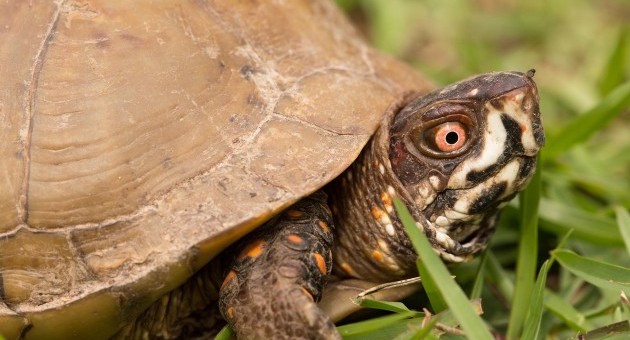There is no evidence that Fish and Wildlife Service employees who charged Lin Drake of Cedar City, Utah, with violating the Endangered Species Act ever heard this poem:
“Yesterday upon the stair,
I met a man who wasn’t there.
He wasn’t there again today,
I wish that man would
go away.”
Nonetheless, the poem encapsulates their case against Mr. Drake. For it was those employees who saw prairie dogs on Drake’s property, prairie dogs that were never there and that have, mysteriously, gone away.
In January 1995, Drake bought property in nearby Enoch, Utah, intending to develop a subdivision containing affordable, single-family homes. Later that year, aware that land in the area contained prairie dogs protected by the ESA, Drake sought to verify his belief that there were no prairie dogs on his property. Using a Utah Division of Wildlife map, Drake learned of a prairie dog colony to the west, although the map showed that no prairie dogs were there in 1992, 1993, and 1994. Just to be sure, Drake hired an engineer to determine the precise relationship between his property and the colony; it was then clear that no part of the colony was on Drake’s land. Thereupon, he recorded a subdivision with Iron County.
On October 2, 1995, state and federal wildlife employees received an “anonymous tip” that prairie dogs were on Drake’s land. They visited the area and, though they did not have a map of Drake’s subdivision and were admittedly unaware of its exact boundaries – which were difficult to determine because of the absence of landmarks – said they observed between 74 and 78 prairie dogs on Drake’s land. Amazingly, only two were filmed, because the FWS employee had “a new camera. It was the first time I used it!” The next day both bureaucrats physically entered upon Drake’s property, but they saw no prairie dogs and no prairie dog mounds or holes, either active or inactive. Nonetheless, that day they notified Drake that prairie dogs were on his land and that he could be fined $200,000 and imprisoned for a year. The next day the FWS employee revisited Drake’s property; again he saw no prairie dogs.
Over the next six months, Drake beseeched FWS employees to visit his property to learn what he knew; there were no prairie dogs there. From October 11, 1995, until March 26, 1996, FWS employees made numerous visits to Drake’s property. At no time did they see prairie dogs, or active prairie dog mounds or holes upon his property. Drake’s expert did find “an old inactive prairie dog colony” on the northern corner of Drake’s land, but it had long been abandoned.
Unsurprisingly, prairie dogs were observed west of Drake’s land, in the known colony. There was one exception: the original FWS employee said that on March 17, 1996, he alone saw two prairie dogs on Drake’s land; again, he was unable to film them! Two years later, when Drake was fined $15,000 for violating the ESA by “harming” prairie dogs by disturbing their habitat, he asked for a hearing before an administrative law judge.
Because the US Supreme Court limits “harm” violations “to significant habitat modifications that actually cause death or injury, as opposed to hypothetical or speculative death or injury,” Drake demanded evidence of “death or injury.” None was produced; even the ALJ admitted, “there is no direct evidence of mortality or injury resulting from [Drake’s] activities. Instead, the FWS relied on its employees’ testimony that the elusive prairie dogs whose presence on Drake’s land was never filmed and whose habitat there was never found, had disappeared. They must be dead, killed by Drake’s actions.
Remarkably, the ALJ upheld Drake’s fine because these were federal employees who had no reason to lie and must, therefore, be believed. Drake appealed the decision. As Will Rogers once said, “I don’t tell jokes; I just report the news.”
 |
Like this article? Don’t forget to share, like or follow us |
 |
NAIA WEEKLY ROUNDUP
FEATURED & LATEST ARTICLES
GET THE NAIA WEEKLY ROUNDUP VIA EMAIL FOR FREE
Stay Connected with The NAIA: Sign Up for The Weekly Roundup
Join our FREE newsletter and community of animal advocates and receive The NAIA Weekly Roundup straight to your inbox. Stay in the loop with the latest news, events, and ways you can make a difference in the lives of animals. Sign up now to stay informed to create positive change!
Sign Up




 A Question of Neglect, A Legendary Primatologist Passes Away, and More!
A Question of Neglect, A Legendary Primatologist Passes Away, and More!
 Shelter Spay Pushback, A Contentious Ostrich Cull, and More!
Shelter Spay Pushback, A Contentious Ostrich Cull, and More!
 Bad Dog Stories, Goodbye Cephalopod, and More!
Bad Dog Stories, Goodbye Cephalopod, and More!
 A Conference Call for You, A Fallen Elephant, and More!
A Conference Call for You, A Fallen Elephant, and More!


